What Is the Farms That Produce Only Enough for the Family With Little Left Over to Trade
The rate at which the country is losing farmers is a cause for concern. If it continues, Indonesia is likely to have no farmers left in 50 years. What will nosotros eat?
"Well, we will exist hungry," said Adang Parman, 58, a farmer from Ciburial village in West Java. Every solar day, the father of iii heads out to the field at the break of dawn to pull out weeds, water his plants or pluck vegetables from his rows of plants. His sons, meanwhile, plow the country with a handheld walking tractor.
Adang has been working in the fields for more than than 40 years. The piece of work is enervating and laborious. This probably explains why fewer and fewer people are taking up the profession.
The country lost v.1 million farmers between 2003 and 2013, with their numbers falling to 26 1000000, according to Statistics Republic of indonesia (BPS). The trend is expected to continue in the next few years. At this rate, Republic of indonesia would lose all its farmers by 2063.
"A big proportion of young people view agricultural work as low-wage, transmission labor that is more suited to those from poor backgrounds who have limited teaching," a 2016 SMERU Research Institute study reads.
Agriculture is a huge correspondent to Indonesia's economy. Around 29 percent of the Indonesian workforce works in the agronomics, fisheries and livestock sector, which contributes nearly 13 percent to the country's GDP. It is the tertiary-biggest contributor to the economy later manufacturing and trade, according to Statistics Indonesia (BPS) information.
Fewer young people are pursuing farming as a profession compared with previous generations. Only 23 percent of the land's 14.2 million people aged between 15 and 24 worked in the agronomics, forestry and fishery sectors in 2019, data from the National Labor Force Survey showed.
Asep, Tisna, Dika – Adang's three sons – correspond the minority of young people venturing into agriculture, post-obit in their father's footsteps.
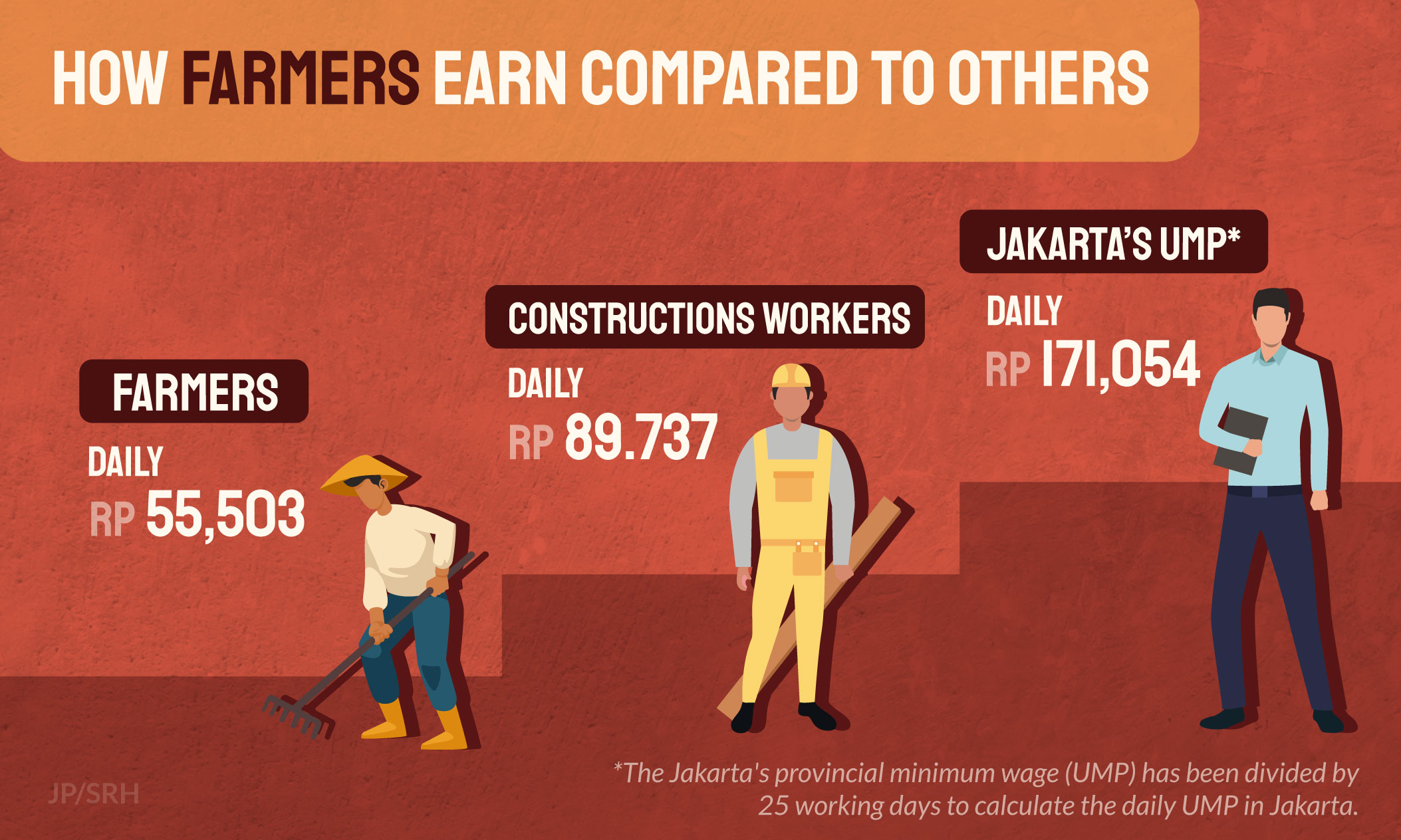
With a population of just 12,000 — less than a quarter the capacity of a major football stadium — Ciburial offers vast expanses of lush, fertile land, perfect for farming. This is not the example elsewhere in Republic of indonesia.
Between 2013 and 2019, Republic of indonesia'south agricultural state decreased to 7.46 million hectares from vii.75 million ha, co-ordinate to data collected by the Agrarian and Spatial Planning Ministry, BPS and several other government institutions.
Issues like increasing production costs, changes in atmospheric condition and pest attacks have also pushed farmers to change professions, with state owners either converting state to other uses or selling it, the SMERU report states.
And then, what went wrong? How can we support more farmers like Adang and his family unit? The Jakarta Post spoke to farmers, agronomics and food companies, policymakers and experts on the challenges and opportunities for Indonesia'southward farmers and the agriculture sector.


Time to come of farming depends on investment
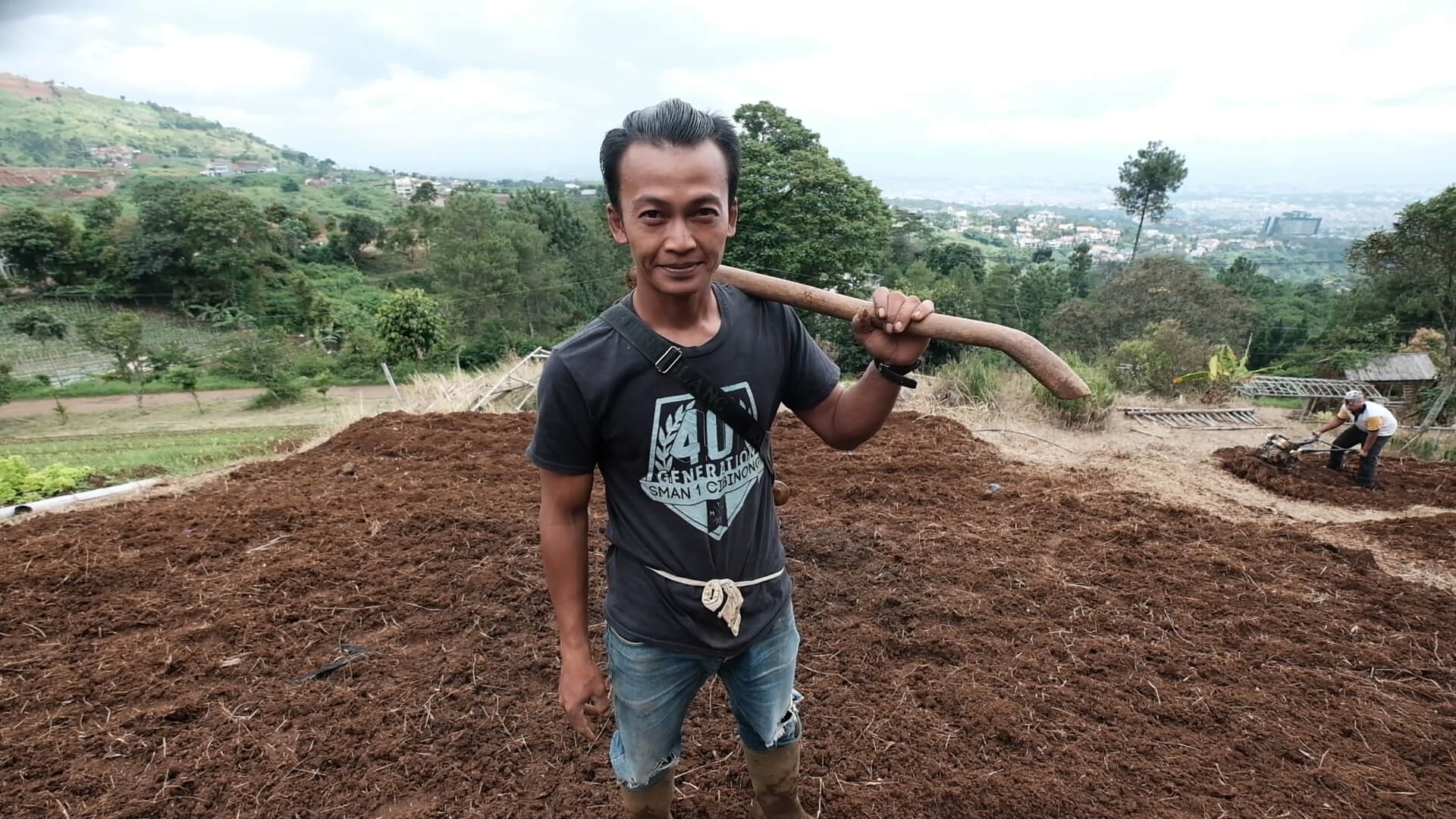
Tisna Rohmat, 33 years old, spoke of his vision for the time to come of farming during The Djakarta Post'due south visit to his family farm in Ciwidey, West Coffee. Seeing this family unit of passionate farmers, while rare, shed light on what could be the time to come of Indonesia's agriculture sector, if Tisna'due south peers followed his lead.
"If you lot desire more than young people to farm, yous must show them our success stories, surely people volition come around, and they will learn what farming is like. So we have to show farming to young people and invite young people to share and take a conversation," said Tisna, beaming with promise.
"There is no job where you lot can exert equally much try equally farming. In farming, the potential is limitless. It all depends on what our capabilities are and how we utilise our intelligence."
But for all Tisna'southward passion, he needs support. Investment in agriculture must come from individuals, the private sector to the government and NGOs, people involved in the sector say. In a nutshell, it takes a village to sow the seeds for the time to come of agriculture.
"Increased investment in agriculture to modernize food systems and markets and make them more efficient is key to breaking this vicious cycle," the Asian Evolution Bank (ADB) wrote in its 2019 report Policies to back up investment requirements of Republic of indonesia's food and agronomics evolution during 2020-2045.
"Such investments will not only help improve the country's food production but volition also enable households to engage in more than productive sectors and earn better incomes."
Infrastructure investments in rural roads, electricity, cell phone towers, markets, common cold chains and processing facilities should exist expanded in partnership with the private sector, the crucial element to this effort, the report states.
The government's increased investment in expanding irrigation and improving existing systems will increase ingather yields and area, while promoting the adoption of avant-garde technologies, it adds.
Technology to pause down barriers, reshape agriculture
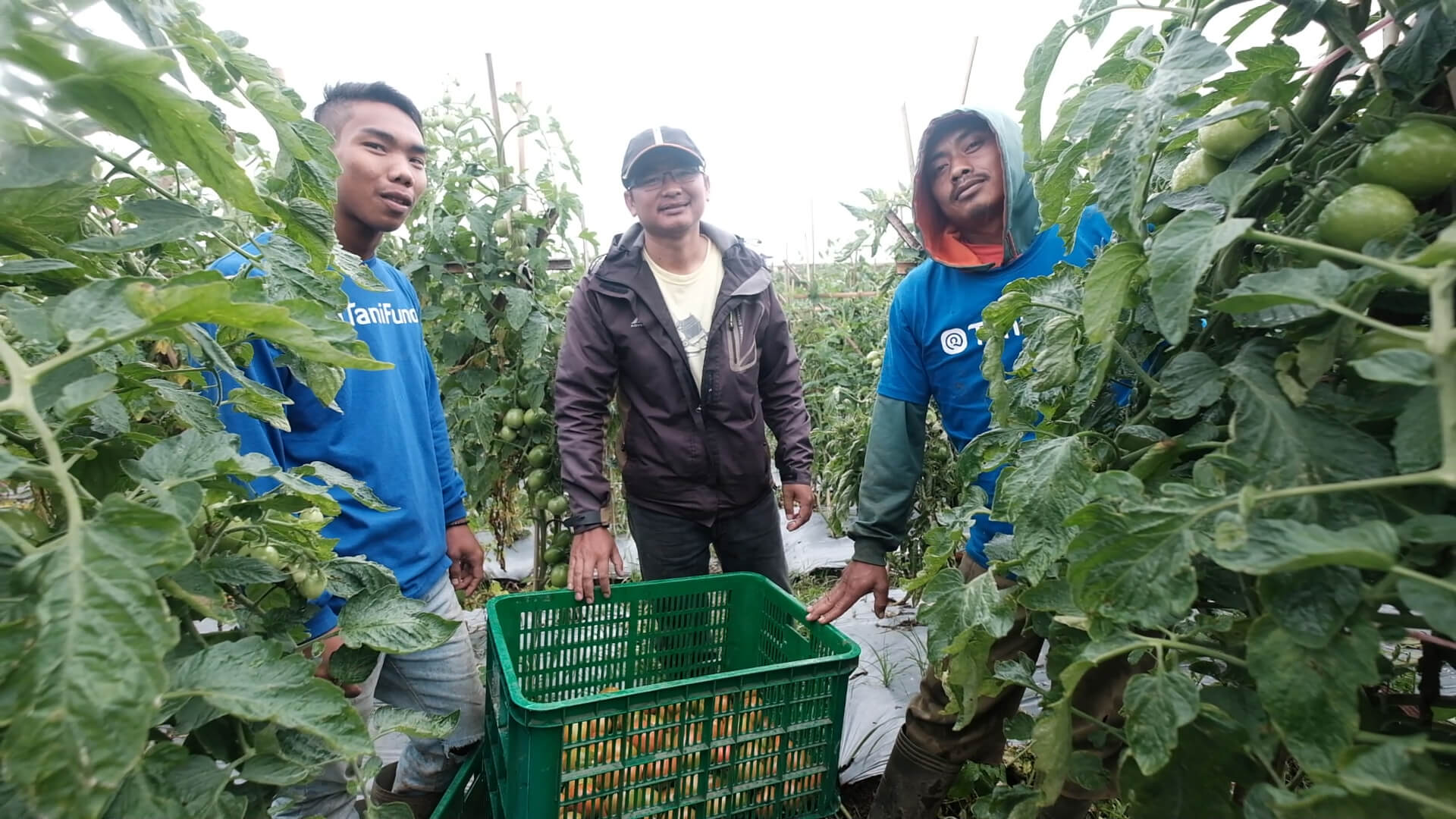
Some engineering-based companies are bridging the yawning gap between farmers and consumers. The likes of TaniHub and Sayurbox allow consumers to buy fresh produce directly from farmers.
Beyond that, TaniHub's peer-to-peer lending arm TaniFund allows individuals to lend money to farmers then they can have a source of funds to expand their operations. TaniFund has channeled Rp 82 billion in loans to one,500 borrowers since its founding in 2017.
Cahyono Kurnia, a 36 years one-time farmer from Ciwidey, W Coffee, is a TaniFund borrower who decided to focus on love apple farming to improve his yields. In his 16 years in farming, Cahyono has tried beans, potatoes, leap onions, cabbages — you name it.
Now with 1 hectare of land of his own and another hectare he rents, he feels more confident about his produce, likewise cheers to TaniHub'south tutor system that allows its field specialists to monitor farmers' progress.
"Before TaniFund was available, I was hesitant to sell my harvests. I had doubts, as I wasn't able to guess my earnings from my crops because prices were unclear. Now, prices take been stable, and I can earn money from skilful prices," said Cahyono, a father of two.
Agricultural technology startup Habibi Garden chief executive officer, Irsan Rajamin, said the utilization of net of things (IoT) technology could exist a magnet for millennials and youth to bring them into the agriculture manufacture.
"Millennials cannot accept their eyes off of their phones, even for just an hour, and then nosotros just accept to make their habits more productive," he said.
Habibi Garden uses digital platforms and IoT to aid farmers. Past connecting sensors and irrigation systems in farms to the cyberspace and providing data based on car learning, Habibi Garden can assistance farmers monitor and maintain their farms and crops remotely.
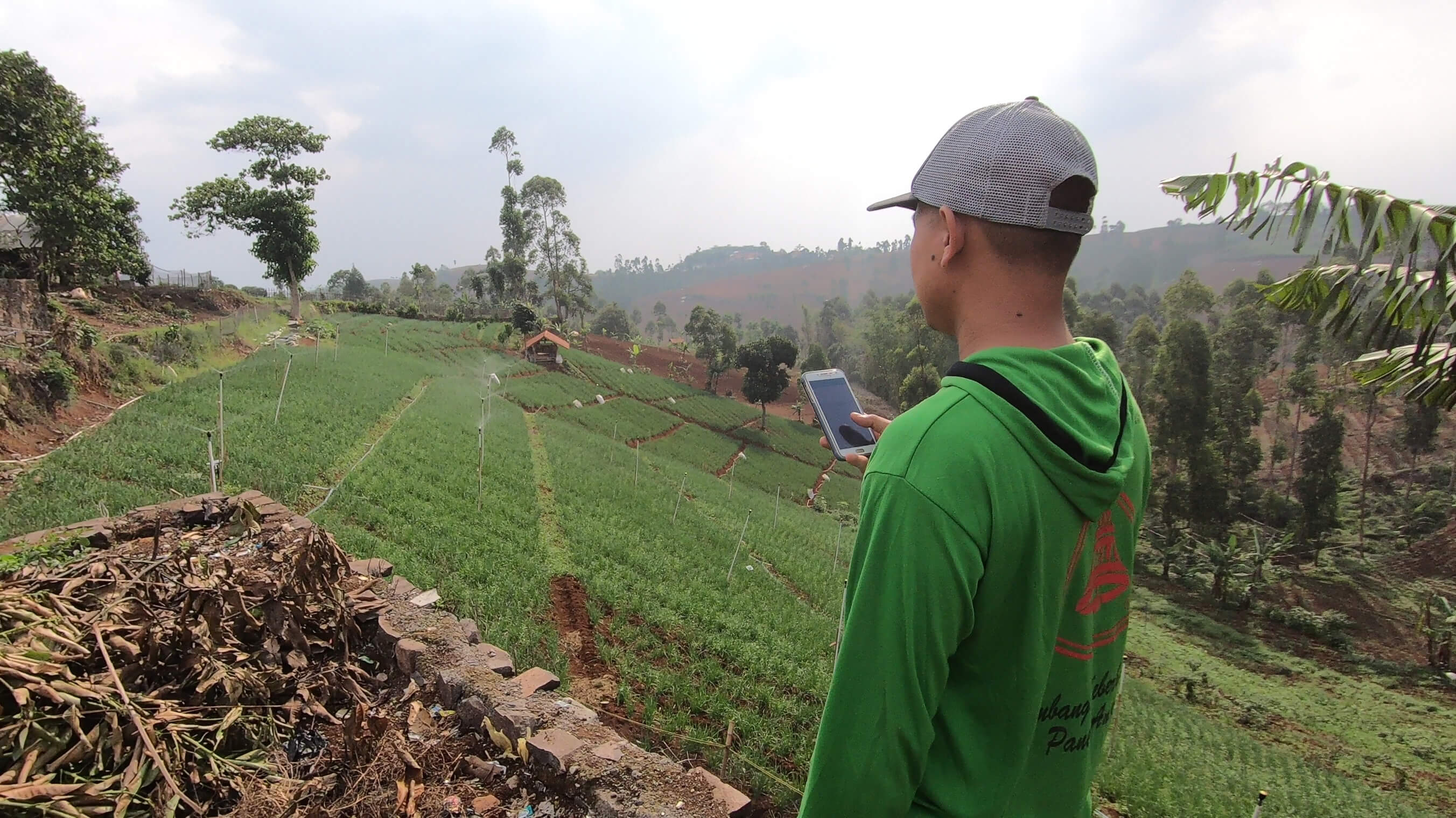
Meanwhile, the Indonesia Japan Horticulture Public-Private Partnership Project (IJHOP4) uses blockchain technology to connect farmers with loans and insurance.
In partnership with data exchange platform HARA and local lender BTPN, the authorities-to-government initiative aims to improve farmers' financial access and cultivation techniques, optimize local supply chains and facilitate links with modern markets.
"If demands can be met, it volition improve the social and economical conditions of thousands of farmers," said Setia Irawan, the CEO of farmers' cooperative-cum-Islamic boarding school Al Ittifaq, a beneficiary of the Republic of indonesia-Japan partnership.
Need for the Japanese kuroda carrot variety alone from Al Ittifaq can attain 5 tons per week throughout the year.
Al Ittifaq empowers Islamic boarding schoolhouse students to cultivate dozens of agricultural production types on its xiv hectares of land in Ciwidey, West Java, an area famous for its ecotourism that is two hours' drive from Bandung urban center center.
'Extraordinary claiming' just hopes high: Government
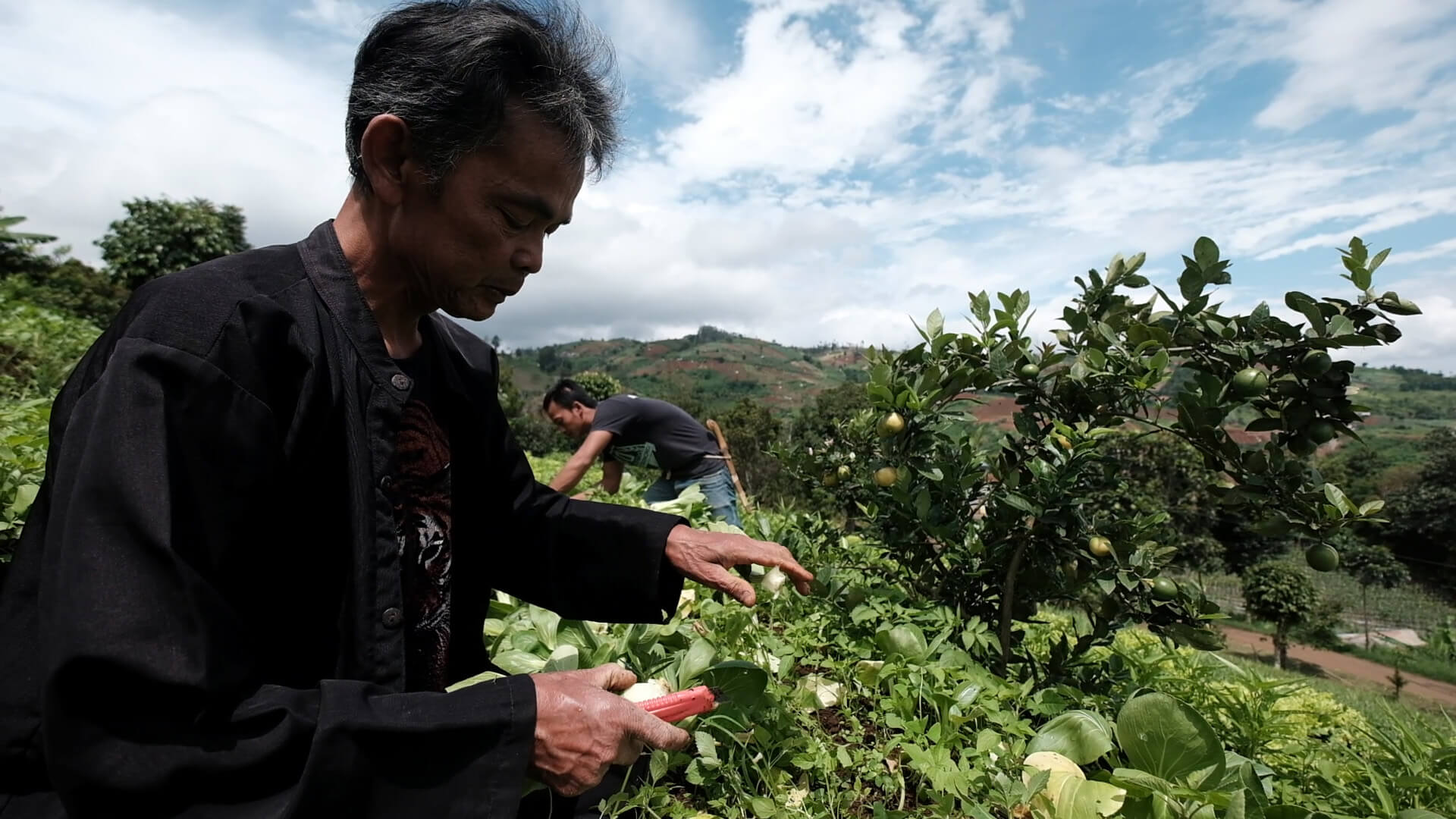
Agronomics Minister Syahrul Yasin Limpo knows well that encouraging young people tin can be an "extraordinary challenge". But the NasDem party politico has pledged to back up immature farmers by expanding admission to innovations and funding schemes.
In its COVID-19 response, Rp 1.85 trillion from the Agriculture Ministry'southward Rp fourteen.06 trillion budget for 2020 has been reallocated for seed assistance, labor-intensive programs, stabilization of nutrient stocks and prices also every bit food distribution and transportation.
The government minister said the ministry building would continue to develop district-based agricultural counseling centers under the Kostratani scheme to better respond to the needs of farmers, in improver to providing microloans to farmers and seeking to triple agricultural exports.
"I am optimistic that the agriculture sector volition thrive and young people today will seize the opportunity. They are a generation that is expert at capturing opportunities," said the minister, a erstwhile governor of S Sulawesi.
- Managing Editor
Evi Mariani
- Deputy Managing Editor
Esther Samboh
- Reporter
Made Anthony Iswara
- Contributor
Arya Dipa
- Multimedia Desk
Bayu Widhiatmoko
Yuliasri Perdani
I Gede Dharma JS
Donny Fernando
Ahmad Zamzami
Rian Irawan
Wienda Parwitasari
Oki Maulana
- UI/UX Designer
Sandy Riady Hasan
Kevin Setiawan
- Technology
Adri Putranto
Mustopa
Akbar Alfattah
Declaricho


Source: https://www.thejakartapost.com/longform/2020/08/13/a-land-without-farmers-indonesias-agricultural-conundrum.html
0 Response to "What Is the Farms That Produce Only Enough for the Family With Little Left Over to Trade"
Post a Comment